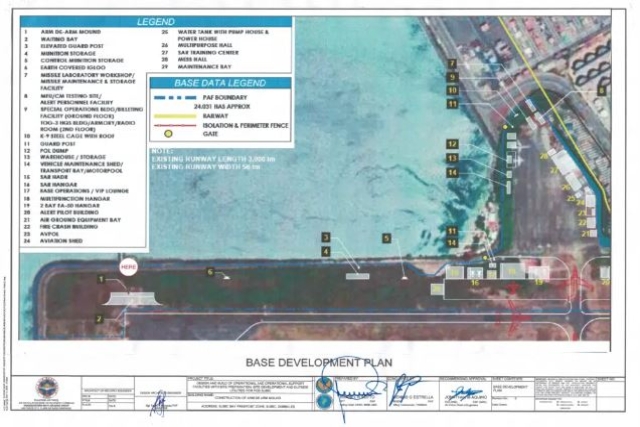Philippines To Reopen Former U.S. Subic Bay Airfield
This initiative aims to bolster the air force's aerial surveillance and power projection capabilities in the South China Sea

The Philippine Air Force (PAF) has announced plans to establish a new forward operating base at Subic Bay International Airport, a site once home to the U.S. Naval Air Station Cubi Point.
This initiative aims to bolster the PAF's aerial surveillance and power projection capabilities in the South China Sea, according to recent bidding documents and development plans cited by Naval News.
The revitalization of Subic Bay, which had been discussed for nearly a decade, gained momentum this year when the PAF formally invited companies to bid on the project. This development is part of a broader strategy to strengthen the Philippines' defense posture amid escalating territorial disputes with China.
Subic Bay International Airport, originally established following the U.S. military's departure from the Philippines in the 1990s, has seen renewed military activity in recent years. Both Philippine and American forces have utilized the area for resupply, refueling, and repairs, while its port facilities have been instrumental in supporting U.S. military equipment deliveries during joint exercises.
In 2022, Manila created the Naval Operating Base Subic adjacent to the South China Sea, converting a 100-hectare section of the former Hanjin Heavy Industries & Construction shipyard. This base is currently the only facility in the Philippines capable of supporting the navy’s largest vessels.
Across Subic Bay, the international airport's transformation into a forward operating base aligns with the PAF's strategic objectives. Proximity to Scarborough Shoal and the South China Sea was cited as a critical factor in the decision.
Joshua Bernard Espeña, vice president at the International Development and Security Cooperation think tank, described the new base as a “significant leap” in the Philippines’ military strategy. “This development operationalizes the Philippines' Comprehensive Archipelagic Defense Concept (CADC), which focuses on rapid and coordinated responses across a vast archipelago. Subic is an ideal location for such a forward operating base,” Espeña told Naval News.

The Armed Forces of the Philippines has designated Subic Bay International Airport as a key point for “Joint Air-Sea-Land Operations” under its strategic basing plan. This plan aims to identify critical locations throughout the archipelago to support and project forces beyond national waters and into the country’s exclusive economic zone.
The PAF bidding documents highlight the potential of the existing runway to support surface attack aircraft for both land and maritime operations. Initial bids, valued at approximately $2.5 million, cover housing and security upgrades, but future plans include facilities for fighter jets, missile storage, and a large hangar for upcoming surveillance aircraft.
Long-term ambitions for Subic include the construction of a dedicated base for drones and maritime patrol aircraft. The Department of National Defense's Defense Planning Guidance 2020-2025 has directed the continued development of these facilities.
Recent military modernization efforts, coupled with U.S. assistance, have provided the Philippines with a diverse range of surveillance aircraft. American-donated planes and Israeli-procured drones have been instrumental in monitoring the South China Sea. Footage from Hermes 900 drones has been crucial in documenting encounters with Chinese forces at the Second Thomas Shoal.
Additionally, the Philippines has benefited from U.S. drone surveillance support, with the U.S. Army and Marine Corps deploying Reaper drones on a rotational basis to assist in combined intelligence-gathering efforts.









